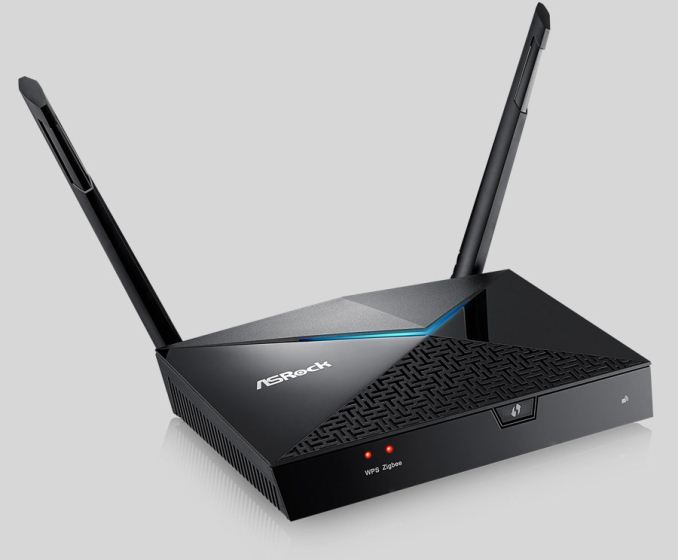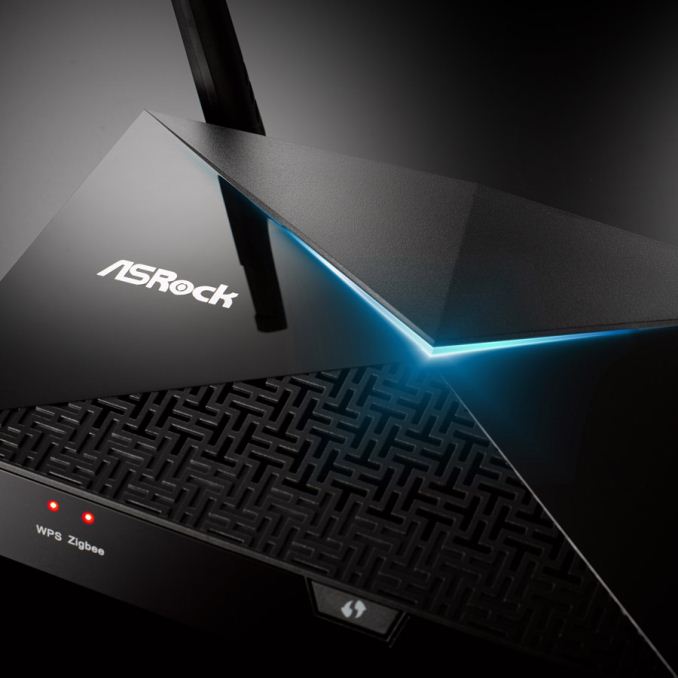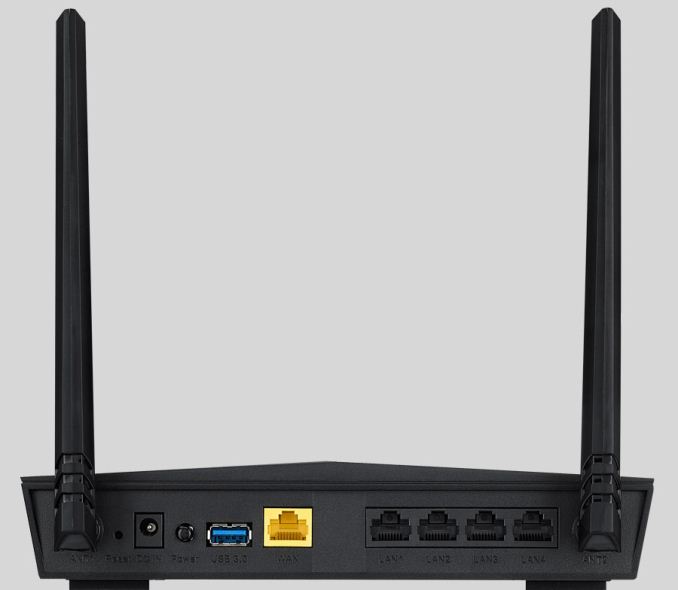ASRock's X10 IoT Router Now Available: 802.11ac, GbE, ZigBee, and IR
by Anton Shilov on September 7, 2017 1:00 PM EST- Posted in
- Networking
- ASRock
- Qualcomm
- 802.11ac
- ZigBee
- ASRock X10
ASRock has started sales of their new smart connected home router, the X10. The new device supports not only 802.11ac Wi-Fi and Gigabit Ethernet like any modern networking router, but also supports ZigBee and IR to control various smart and home electronics as a connected home central hub.
The X10 and devices like it comes at an interesting inflection point for the consumer networking gear industry; nowadays, Wi-Fi is ubiquitous and basic routers are cheap, if not outright free from an ISP, pushing the overall market towards being highly commoditized. However farther at the edge of the market and consumer adoption, there are new technologies knocking the door, such as ZigBee and Z-Wave for smart home appliances as well as 802.11ad for wireless docking of laptops. While hubs for these devices can already be purchased seperately, standalone ZigBee and Z-Wave hubs/dongles cost about $100, slightly lowering attractiveness of home automation in general. As a result, demand for routers with ZigBee and Z-Wave is growing as a means of centralizing all of these network-related functions, and ASRock wants to capitalize on this with its new X10 product that supports ZigBee in addition to 802.11ac MU-MIMO.
The ASRock X10 AC1300 IoT router is based on an unnamed SoC from Qualcomm featuring four ARM Cortex-A7 general-purpose cores. When it comes to wireless capabilities of the device, it works over 2.4 GHz (400 Mbps) as well as 5 GHz (867 Mbps) bands using two 5 dBi high gain antennas to connect different devices simultaneously. As for hardware connectors, the X10 router has one 1 GbE WAN port, four GbE LAN ports, one USB 2.0 port for storage devices and one USB 3.0 port (for add-on).
As mentioned above, the ASRock X10 has integrated ZigBee radio that can connect to compatible smart home appliances (sensors, lighting, heaters, security systems, etc.) using a 250 Kbit/s channel and enable users to read/control those using special apps for Apple iOS and Google Android. Since there is a fleet of consumer electronics devices that use IR for controls, the developers of the X10 also equipped it with IR blasters as well. Obviously, in order to control things like TVs or conditioners using IR, the router has to be placed in direct line of sight with them, which may not always be optimal for various reasons, but that’s the price of added comfort.
Hardware capabilities of the ASRock X10 are not its only advantages since the company invested a lot in its software in a bid to make it a hub for a smart home. For example, X10-compatible apps controlling alarms of certain devices can send commands to the router based on geolocation of the owner. In addition, the owner can control the X10 and all of their smart and CE devices remotely.
ASRock’s X10 IoT router is available for pre-order from Amazon in the U.S. at $149.99, or can be bought from Newegg for $139.99. The ASRock X10 is not the only ZigBee-, IR- and remote management-supporting router on the market. An important thing about the X10 is that it comes from a mass-market manufacturer, which means that demand for routers with IoT features is growing rapidly.
Related Reading:
- Qualcomm Announces Mesh Networking Wi-Fi Router Reference Design with IoT Functionality
- Netgear Launches Nighthawk X4S AC3200 DOCSIS 3.1 Cable Modem Router
- Amped Wireless Launches AC2200 HELIOS Family with Qualcomm's Tri-Radio 802.11ac Solution
- Netgear Launches 802.11ad-Enabled Nighthawk X10 (R9000) Wi-Fi Router
- Belkin WeMo and Ubiquiti mFi Home Automation Platforms Review
- Securifi's Almond+ 802.11ac Touchscreen Wi-Fi Router Integrates ZigBee and Z-Wave
- Belkin WeMo and Ubiquiti mFi Home Automation Platforms Review
- Philips Hue: Automated Home Lighting Gets Colorful
- Home Automation and the 'Internet of Things'
Source: ASRock



















17 Comments
View All Comments
nathanddrews - Thursday, September 7, 2017 - link
... but not X10, the domotics protocol?Samus - Thursday, September 7, 2017 - link
Yeah, calling this thing x10 when it doesn't support x10 is pretty confusing...especially when x10 protocol is essentially the first smart home protocol.Hurn - Thursday, September 7, 2017 - link
Yes, I'm confused, too. It's called the X10, and it supports ZigBee, but it doesn't support X10? (originally known as "BSR x10" back around 1980).I still have a ton of X10 modules around the house, and use them every day. It'd be nice if something new came along, which supported them.
JohnVIII - Thursday, September 7, 2017 - link
You'd think they would include Insteon and/or X10 power line communications protocols.I wonder if they even knew about X10 before naming this product.
CaedenV - Thursday, September 7, 2017 - link
Most likely the protocol is older than most of the engineers that put this thing together lolLord of the Bored - Sunday, September 10, 2017 - link
Honestly, calling a home automation product X10 seems like it is begging for a lawsuit. But the current owners of the brand may not be in a position to start slinging lawyers right now.det_bradlee - Thursday, September 7, 2017 - link
IR, really? How about RF instead?Samus - Friday, September 8, 2017 - link
Yeah, like maybe x10 RF... lolbcronce - Thursday, September 7, 2017 - link
MU-MIMO is mostly pointless with only two antenna. It can only talk to one device at a time with the only benefit being beam-forming, which is already part of 802.11ac MIMOBrokenCrayons - Thursday, September 7, 2017 - link
I don't have much interest in replacing dumb devices with smart ones. It seems like an unnecessary burden that turns more of my leisure time into systems administration chores.